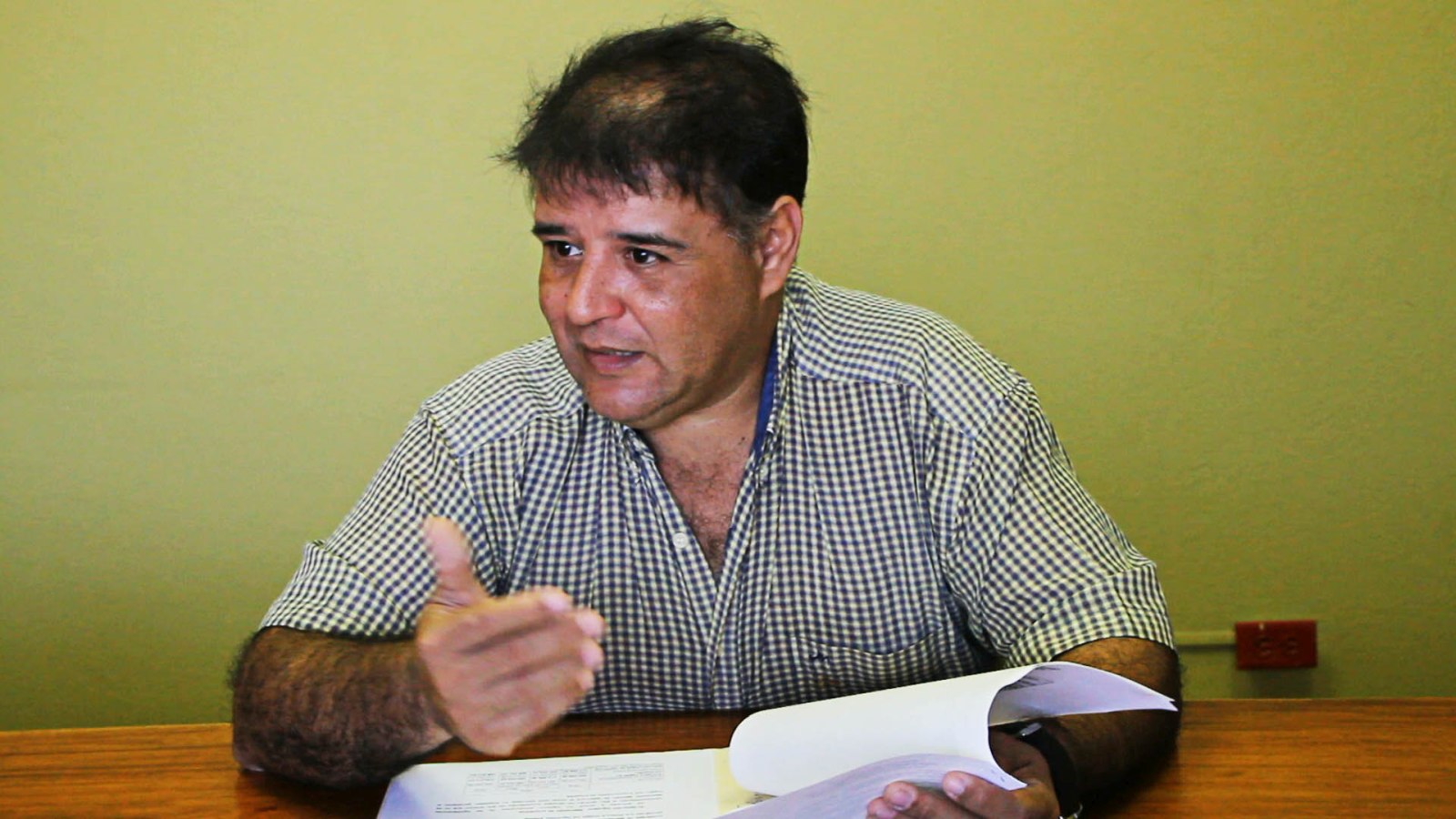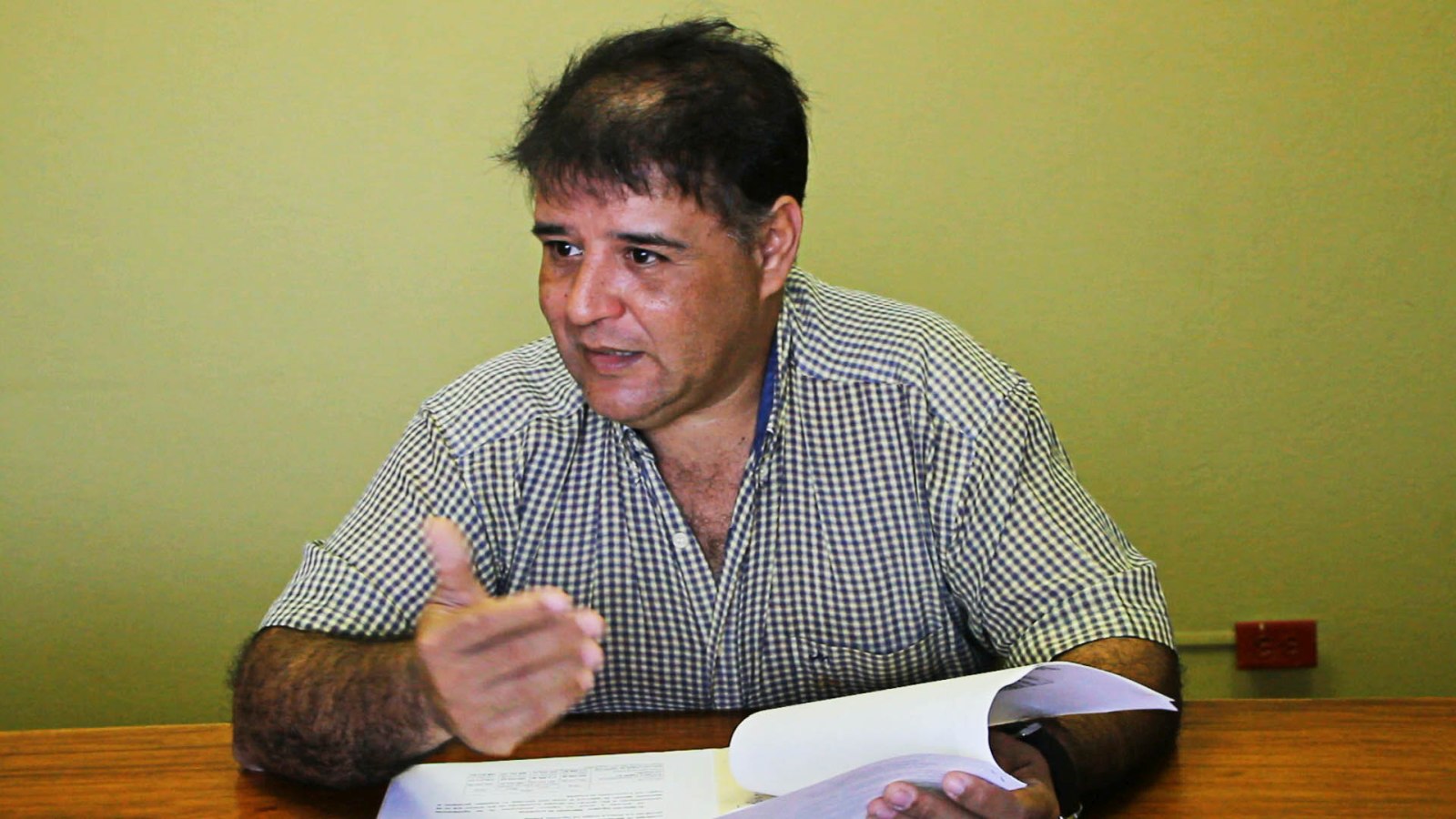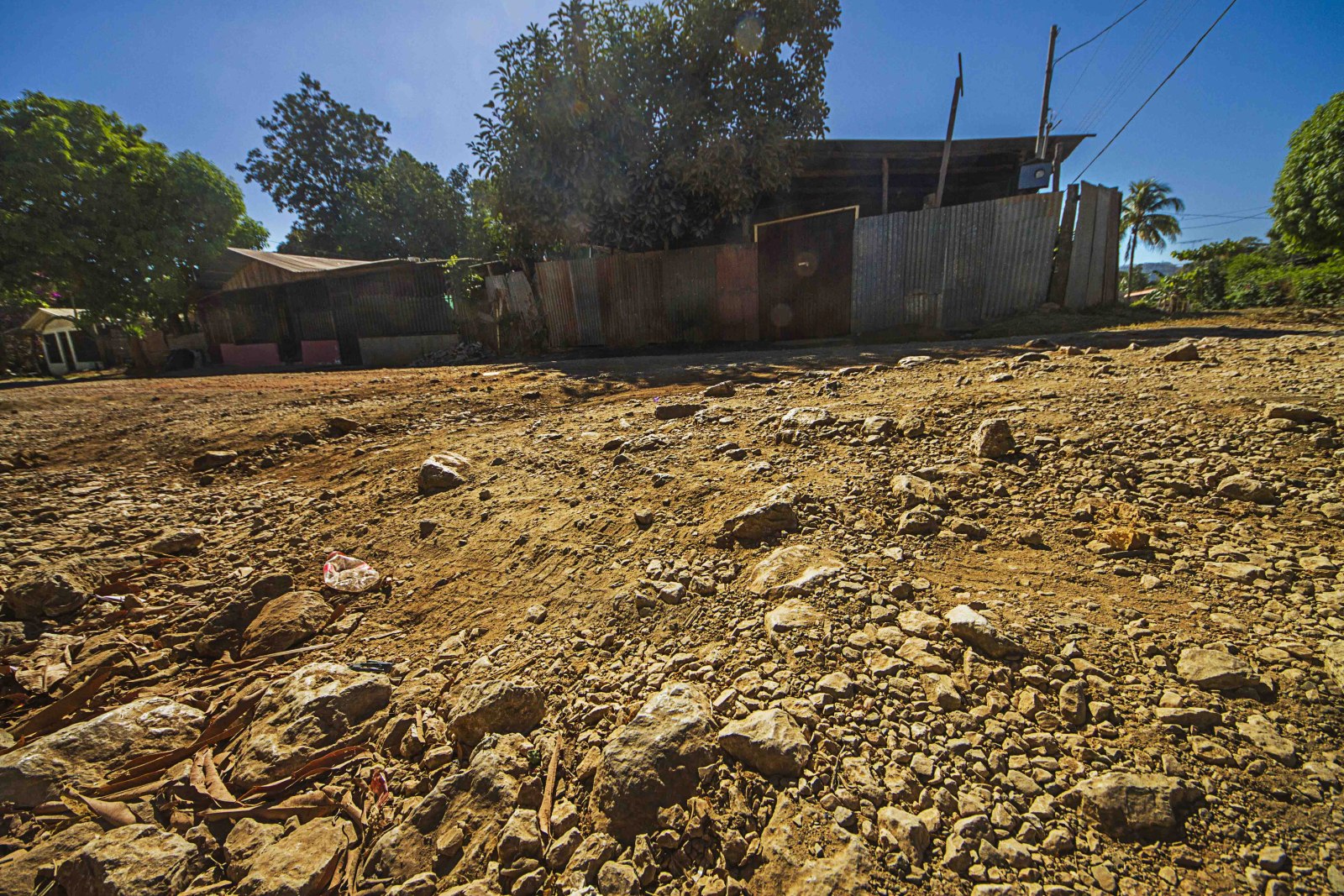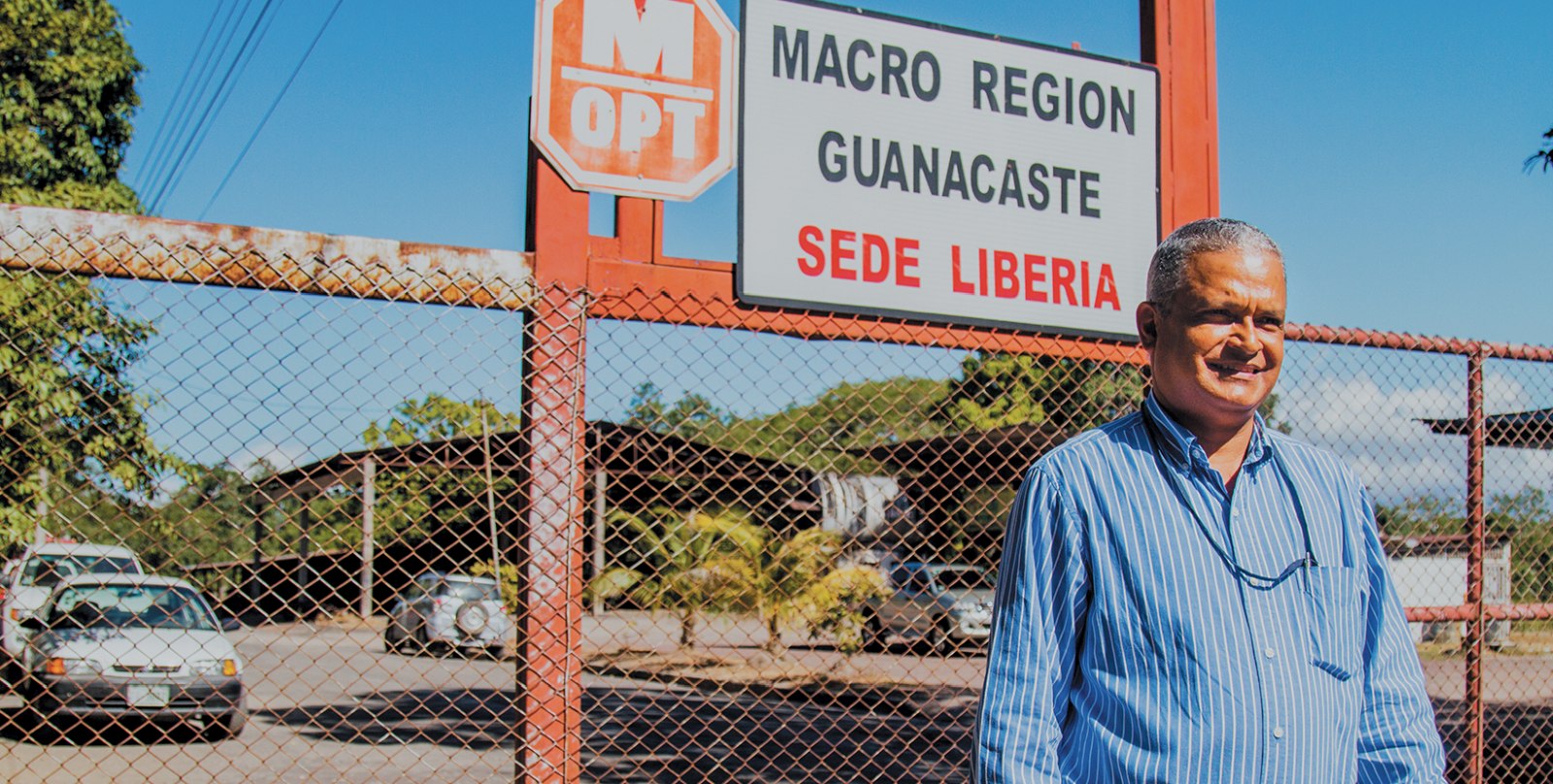
Guanacaste’s roads are famous, but not for their beauty or design, like the rest of the province. They are famous for their potholes, bad signage and traffic accidents. Guanacaste is the province that receives the highest number of visitors in the country, with an international airport that is growing every day and residents who live waiting to receive what they deserve: good highways. The Voice interviewed Julio Viales Padilla, regional director of the Ministry of Public Works and Transportation (MOPT – Ministerio de ObrasPúblicas y Transporte), to get a better understanding of why the province doesn’t have better roads.
In the interview, Viales, 51 years old, says he is frustrated and suffering because he is unable to give Guanacastecans the highways they need. He told us of the difficulties that confront MOPT’s internal operations, defended against criticisms for the work done on route 160, and said he believes that today’s engineers are not what they used to be. Here we present a summary of the interview.
Why is MOPT machinery working on route 160 when it’s the legal responsibility of CONAVI, as it’s a national route?
Everything started because there was an emergency decree for support resources that one of the residents brought against the National Roadway Council (CONAVI – Consejo Nacional de Vialidad). And [Pedro Castro] also requested that we intervene because the dust and health problems are huge. CONAVI told Pedro that at least an investment of ₡500 million ($1,000,000) was needed, to lay a new 30-centimeter base and then a layer above to ensure the structural capacity in urban areas. However, there wasn’t a way to obtain the ₡500 million. The requested funds were in CONAVI as a residual budget; nonetheless CONAVI also had the problem of route 21, on the stretch from Nicoya to the curves of Nambi, so that budget couldn’t be given to 160 but went to 21.
The project became ours. They didn’t give me base material, they didn’t rent the machinery for me that they said they would, and they left the problem to me. So, in the end, we stabilized with 5 centimeters instead of 30 and we were able to add a layer of 1 to 2 centimeters to hold and seal the material that we had put there.
Did the ₡70 million ($140,000) previously promised by MOPT leadership ever exist?
I know there were promises, not in the sense that the money was there, but in the sense that we would process the project, which is a very big project– 37 kilometers. It’s an area where there have to be a lot of ground substitutions,with huge clay deposits. It’s not a good area to build highways, which is why it’s very expensive. The money never existed because first there has to be a process to request a public loan.
So there was never a request made to the Inter-American Development Bank (IADB)?
It wasn’t processed. (The request) can’t be made if the requirements aren’t met. IADB will ask that the designs are made, that there are road rights already granted to the project, that there’s political will. IADB isn’t going to take the risk of financing a project without it being well-considered during the initial phase.
Many say that MOPT’s good engineers are gone, who built the first highways in the country. Do you agree with that opinion?
Yes. One of the last was Mr. Rodolfo Mendez Mata. He even became the minister of MOPT. Good engineers don’t exist; what does exist are good results and the capacity to bring projects to a good conclusion.
So the MOPT and CONAVI engineers are not prepared to fulfill their duties?
There are some very good professionals. What’s happening is that they don’t have highway experience. Education on the subject of highways is deplorable. MOPT is the real highway school of this country. Before, to be a regional director one had to complete trials (and) route design, through different departments so one would have a broad understanding. And afterwards they would be sent to the field to build as a regional director or project director. That was lost. MOPT became much bigger. In some municipalities there are engineers who don’t even understand how to place a structure; it’s incredible. Many of these young people are learning from municipal inspectors, and municipal inspectors have a lot of limitations.
The large majority of presidential candidates have said that they would eliminate CONAVI. Is that the solution?
I don’t think they can eliminate CONAVI, because CONAVI has been taking out public loans in recent years to finance their projects, based on future budgets. They have spent the money now and they are paying with loans from here to five years [from now]. These gentlemen (the candidates) can’t close it because there’s a need to continue paying the loans.
So do you agree with the concessions?
Yes, I do agree, but they should be done within a framework of partnership between public and private companies. When that partnership is broken is when the problems start. Privatization of services alone hasn’t worked, but neither has the public enterprise because we have a lot of limitations.
What is the budget amount that MOPT allocates to Guanacaste each year?
None. What I do is request materials and equipment. In reality the regionalization of Public Works has never existed and doesn’t exist, because in the moment a macro region (Guanacaste) doesn’t have its own budget, it is not a region, because when they limit our resources I have to stay quiet,whereas if I had a budget allocation I could make things happen, for example in contracting personnel. Almost all of the MOPT personnel in Guanacaste were contracted during the governments of Mr. Pepe Figueres and Daniel Oduber. In the last five years, about 30% of those personnel have retired and the posts are lost because we can’t re-contract, as I don’t have the money to do so.
How many machines do you have?
In 2002 I had 27 trucks; today I only have ten, of which six or eight work. I have an asphalt plant that was made in 1958. It’s older than I am; I don’t know how it’s still working. I have two tractors; in 2002 I had seven. In 2002 I had three patching squads and today I don’t have any. We lay 60 kilometers of pavement, even though you don’t believe it. What’s happening is that Guanacaste is too big. Maintenance was left to the municipalities because I don’t have a patching squad.
Can things work like this?
No. It’s very difficult. I suffer a lot because communities aren’t receiving the service they deserve to receive, because they’ve let the institution fall to pieces, and that’s not good for anyone.







Comments